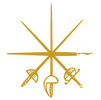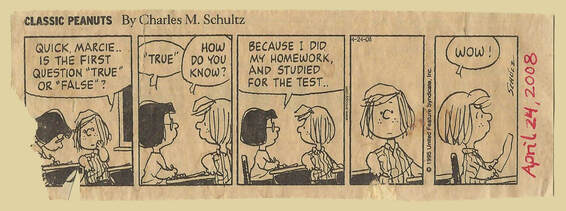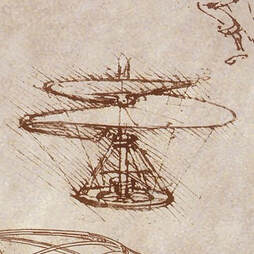About
|
“You may have tangible wealth untold; Caskets of jewels and coffers of gold. Richer than I you can never be -- I had a Mother who read to me.” Excerpt from The Reading Mother, by Strickland Gillilan |
“Study without desire spoils the memory, and it retains nothing that it takes in." Leonardo da Vinci |
Where do we come from?
We grew up in a home environment where education was highly valued. Our mom read to us directly from birth, starting with such classic picture book titles as Pat the Bunny by Dorothy Kunhardt, Good Night Moon and The Big Red Barn by Margaret Wise Brown, Each Peach Pear Plum by Janet and Allan Ahlberg, and Drummer Hoff by Barbara and Ed Emberley (what child can ever forget the satisfying explosion of color depicted in the eventual blast… “KAHBAHBLOOOM!” …leading to the final pastoral scene of the retired cannon nestled in a field overgrown with flowers, birds, and insects?).
All four of us children were early, self taught readers. Our house contained an inexhaustible supply of entertaining reading materials, from picture books to chapter books, both fiction and nonfiction, as our parents presented us with gifts of books on our birthdays and any other available occasion on the calendar. Early Saturday mornings found us pursuing various adventures in far off lands while reading in our beds instead of sitting in front of a television watching cartoons or playing video games.
Even after we could read to ourselves, our mom still read to us, mostly at bedtime. And... we listened to books-on-tape while traveling in the car. Driving to school, athletic practices and games, winter weekend ski trips, and out of state doctor’s appointments allowed plenty of time for transportation to other worlds beyond those lines painted on the highway. These shared imaginative excursions served to bring our family closer together. It was through listening in the car that we first encountered such children’s literature classics as The Complete Tales of Winnie-the-Pooh by A. A. Milne, The Trumpet of the Swan by E. B. White, A Stranger Came Ashore by Mollie Hunter (a haunting selkie sea legend that still gives us goosebumps), The Boggart by Susan Cooper, and The Merry Adventures of Robin Hood by Howard Pyle (here our mother admitted to listening ahead after dropping us off at school; she sobbed on her drive home all throughout Robin Hood’s death scene with Little John). We borrowed many of these audio books from the library, but some tapes we owned and would revisit frequently over the years. Examples of these perennial favorites include: Shel Silverstein reciting his own poetry in dramatic fashion (selections from Where the Sidewalk Ends and A Light in the Attic), Lives of the Writers: Comedies, Tragedies (and What the Neighbors Thought) by Kathleen Krull, and of course the tales written and performed by master storyteller Jay O’Callahan in his recordings of The Little Dragon (“Hurry, hurry, little dragon!") and Orange Cheeks and Other Stories. We never grew tired of these.
Elementary school found us ahead of curriculum standards through no directed tutorials but simply through this exposure to books: reading books and listening to books. Not only had we developed advanced vocabulary skills and a natural understanding of formal sentence structure, but we also were able to focus for long periods of time. We had become strong auditory learners with excellent listening attention spans: useful traits to facilitate learning in a classroom setting.
We grew up in a home environment where education was highly valued. Our mom read to us directly from birth, starting with such classic picture book titles as Pat the Bunny by Dorothy Kunhardt, Good Night Moon and The Big Red Barn by Margaret Wise Brown, Each Peach Pear Plum by Janet and Allan Ahlberg, and Drummer Hoff by Barbara and Ed Emberley (what child can ever forget the satisfying explosion of color depicted in the eventual blast… “KAHBAHBLOOOM!” …leading to the final pastoral scene of the retired cannon nestled in a field overgrown with flowers, birds, and insects?).
All four of us children were early, self taught readers. Our house contained an inexhaustible supply of entertaining reading materials, from picture books to chapter books, both fiction and nonfiction, as our parents presented us with gifts of books on our birthdays and any other available occasion on the calendar. Early Saturday mornings found us pursuing various adventures in far off lands while reading in our beds instead of sitting in front of a television watching cartoons or playing video games.
Even after we could read to ourselves, our mom still read to us, mostly at bedtime. And... we listened to books-on-tape while traveling in the car. Driving to school, athletic practices and games, winter weekend ski trips, and out of state doctor’s appointments allowed plenty of time for transportation to other worlds beyond those lines painted on the highway. These shared imaginative excursions served to bring our family closer together. It was through listening in the car that we first encountered such children’s literature classics as The Complete Tales of Winnie-the-Pooh by A. A. Milne, The Trumpet of the Swan by E. B. White, A Stranger Came Ashore by Mollie Hunter (a haunting selkie sea legend that still gives us goosebumps), The Boggart by Susan Cooper, and The Merry Adventures of Robin Hood by Howard Pyle (here our mother admitted to listening ahead after dropping us off at school; she sobbed on her drive home all throughout Robin Hood’s death scene with Little John). We borrowed many of these audio books from the library, but some tapes we owned and would revisit frequently over the years. Examples of these perennial favorites include: Shel Silverstein reciting his own poetry in dramatic fashion (selections from Where the Sidewalk Ends and A Light in the Attic), Lives of the Writers: Comedies, Tragedies (and What the Neighbors Thought) by Kathleen Krull, and of course the tales written and performed by master storyteller Jay O’Callahan in his recordings of The Little Dragon (“Hurry, hurry, little dragon!") and Orange Cheeks and Other Stories. We never grew tired of these.
Elementary school found us ahead of curriculum standards through no directed tutorials but simply through this exposure to books: reading books and listening to books. Not only had we developed advanced vocabulary skills and a natural understanding of formal sentence structure, but we also were able to focus for long periods of time. We had become strong auditory learners with excellent listening attention spans: useful traits to facilitate learning in a classroom setting.
What do we mean by Renaissance Education?
Renaissance (noun), definition:
Renaissance (noun), definition:
- A movement or period of vigorous artistic and intellectual activity
- Rebirth, Revival
“All human beings by nature desire to know.” Aristotle, Metaphysics
Returning to our elementary school days...
Our mom recalls a particular “aha!” moment when a visiting relative asked a first grade Leo about how he was enjoying school. “It’s great!” Leo cheerfully replied. “I’m learning a whole bunch of stuff that I already know!”
Recognizing that the public school curriculum wasn’t meeting our educational needs, our mother joined forces with two friends to organize summer enrichment activities for their young children (seven school aged boys and two toddler girls). The idea was to create a variety of learning and growth experiences in a low pressure environment, involving no assessment. Exposure was all. Fun was necessary. They called this adventure Renaissance Camp and we continued to meet 2-4 times per summer for several years until it became too difficult to coordinate busy schedules.
Typically we would meet for a two hour Renaissance Camp activity, followed by a picnic lunch, and an afternoon of swimming in our pool or playing in the yard. Each mom took turns organizing a session, looking to take us in as many different directions as possible. Though we never were tested on what we learned, we remember these activities vividly. Here are some examples of our Renaissance Camp experiences:
One morning we explored concepts of aerodynamics, lift, and flight, including Bernoulli’s Principle, through simple demonstrations and (mildly destructive) experiments with blow dryers.
Another time we created artwork to be silk-screened onto tee-shirts. We took a field trip to the printing factory, where the silk-screen process was demonstrated for us, and we were allowed to have a go at spreading the paint onto the screen ourselves. We watched our shirts being hand printed and ended up with souvenirs of the summer.
Our favorite teacher joined in the fun one summer in the role of “guest facilitator”. Mr. B. presented us with open-ended physics/engineering challenges that we tackled in small mixed-age groups (with the moms even joining in with us on some of these). There were no directions to follow here: just a collection of allowable materials, a specified end-goal, the laws of nature, our imaginations, and the process of trial-and-error.
- We made “flinkers” (objects that neither float nor sink when placed in water).
- We competed for speed and distance propelling plastic drinking straws along a length of string using only some form of balloon as power.
- We designed and constructed egg containers out of popsicle sticks, elastics, straws, and paperclips to protect a raw egg from breaking on the concrete decking when dropped from the porch roof. (One group’s “egg drop” actually worked!)
- We designed and constructed toothpick bridges to bear maximum weight over a specified span of suspension.
These joint efforts at creative problem solving generated some surprising innovations and a variety of solutions while naturally fostering cooperation. Mostly we remember laughing very hard.
Somehow the renaissance moms even convinced us kids to prepare, cook, and serve dinner to the parents. We were lured by our very own chef’s aprons and toques, sharp knives, and two honest-to-goodness (extremely patient) professional chefs to guide us through the process. The simple meal of marinated meat and vegetable kabobs on the grill, seasoned rice, garlic french bread, and a fruit and pastry dessert was a success! We may have lost interest by the time it came to washing up the pots and pans.
Two ambitious field trips took us into Boston:
One time we enjoyed a visit to The Museum of Science for the Leonardo DaVinci Special Exhibit, where we lost track of time absorbed in the magical models of Leonardo’s many detailed inventions. This was our introduction to the ultimate Renaissance Man. His 16th century visions came to life before our eyes and made us feel that even our own seemingly impossible ideas might be possible.
The other time, we went to see STOMP, the energetic percussion/dance theatrical production which creates music through percussive rhythms. This gave us all sorts of new ideas for using brooms and trash bins to enhance life ...and make lots of noise.
All of these experiences reflect what we mean by Renaissance Education. It is about creating opportunities and environments that promote vigorous artistic and intellectual activity. It’s about finding joy in learning simply for the sake of learning. It’s about expanding our horizons by asking open-ended questions. It's about learning how to think. We have designed our enrichment programs with this in mind.
One of our longtime teachers, healers, and mentors frequently reminds us about life that…
“It's all a great adventure!"
Dr. Kenneth Emonds, PhD
This attitude is especially important to embrace at those times when we are struggling. Through DesBois Tutoring and Enrichment, we aim to help each student bring this same spirit of adventure to his or her learning.
Leo, Jack & Margot DesBois
September 2020
Somehow the renaissance moms even convinced us kids to prepare, cook, and serve dinner to the parents. We were lured by our very own chef’s aprons and toques, sharp knives, and two honest-to-goodness (extremely patient) professional chefs to guide us through the process. The simple meal of marinated meat and vegetable kabobs on the grill, seasoned rice, garlic french bread, and a fruit and pastry dessert was a success! We may have lost interest by the time it came to washing up the pots and pans.
Two ambitious field trips took us into Boston:
One time we enjoyed a visit to The Museum of Science for the Leonardo DaVinci Special Exhibit, where we lost track of time absorbed in the magical models of Leonardo’s many detailed inventions. This was our introduction to the ultimate Renaissance Man. His 16th century visions came to life before our eyes and made us feel that even our own seemingly impossible ideas might be possible.
The other time, we went to see STOMP, the energetic percussion/dance theatrical production which creates music through percussive rhythms. This gave us all sorts of new ideas for using brooms and trash bins to enhance life ...and make lots of noise.
All of these experiences reflect what we mean by Renaissance Education. It is about creating opportunities and environments that promote vigorous artistic and intellectual activity. It’s about finding joy in learning simply for the sake of learning. It’s about expanding our horizons by asking open-ended questions. It's about learning how to think. We have designed our enrichment programs with this in mind.
One of our longtime teachers, healers, and mentors frequently reminds us about life that…
“It's all a great adventure!"
Dr. Kenneth Emonds, PhD
This attitude is especially important to embrace at those times when we are struggling. Through DesBois Tutoring and Enrichment, we aim to help each student bring this same spirit of adventure to his or her learning.
Leo, Jack & Margot DesBois
September 2020



